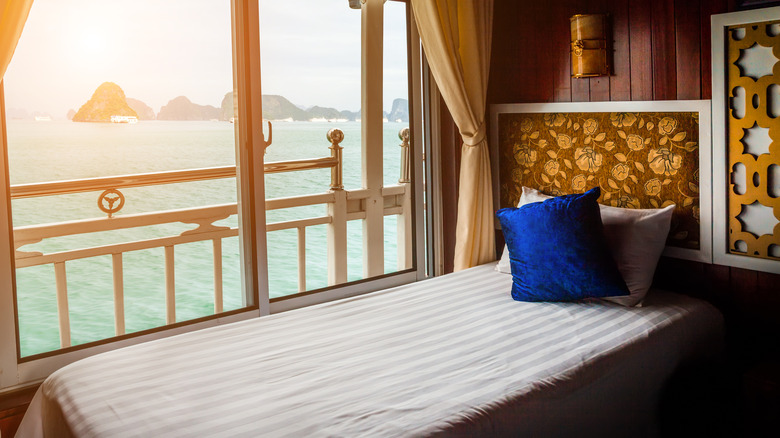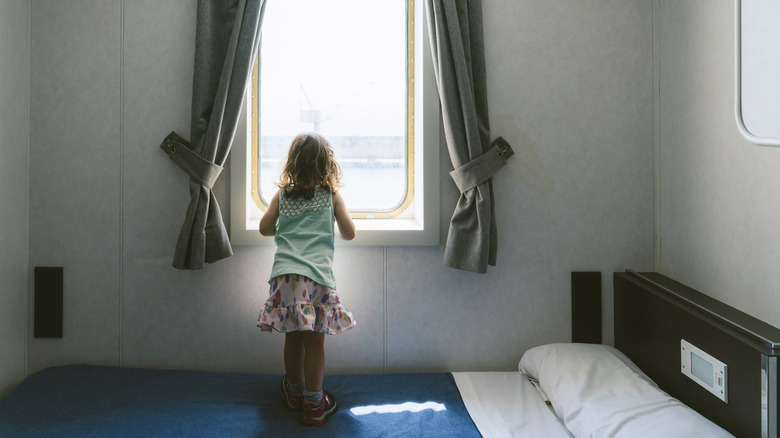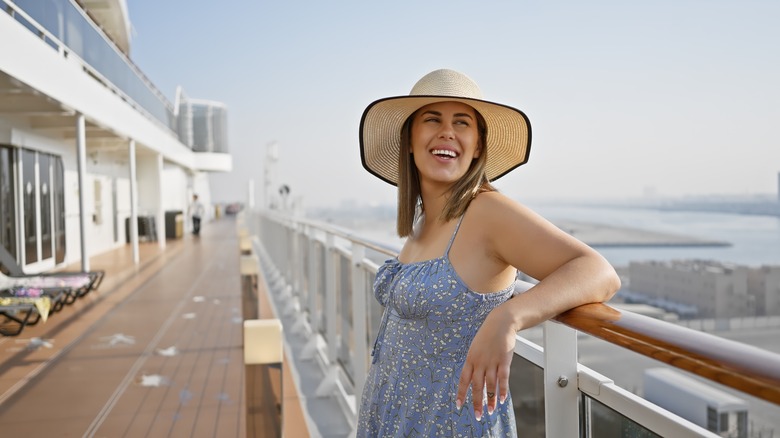The Unexpected Reason Cruisers Should Probably Avoid Booking These Pricier Cabins
Love them or hate them, you have to admit that cruise ships have revolutionized how we experience travel. Offering a unique blend of luxury, adventure, and convenience, all wrapped into one floating resort, most cruise ships typically feature an array of accommodations designed to suit every budget and preference.
That said, although the allure of waking up to uninterrupted ocean views and fresh sea breezes might be tempting enough for you to splurge on a high-deck cabin with a balcony, the reality isn't as idyllic. Despite the premium price tag — or the fact that they generally offer prime access to on-board amenities like pools and restaurants — cabins on upper decks come with a pretty significant downside: Increased motion sensitivity.
The physics is simple: The higher up you go on a cruise, the more likely you are to feel the ship's movement as it navigates through waves and wind. This is all due to the combination of visual confusion — as in, your eyes telling you that you're sitting still while your body feels movement — and heightened swaying, which can lead to nausea, dizziness, and vertigo. All of which can then trigger (or worsen) seasickness symptoms — even for passengers who don't typically experience motion sickness.
The best cabin to book if you're prone to getting seasick
Hoping to prevent seasickness aboard your next cruise? One of the best things you can do to avoid battling with the motion of the ocean is to book a cabin in the middle of the ship or on a lower deck. This is because midship cabins generally experience less movement since they're closer to the ship's natural balance point — meaning you'll also feel fewer ups and downs and less side-to-side rolling compared to front or back cabins. As for lower-deck rooms, being closer to the waterline also helps minimize that nauseating sway that can turn your vacation upside down.
And while you might sacrifice the panoramic views by going for a cabin that doesn't sit sky-high, you'll be much more likely to enjoy a stable cruise experience that'll actually let you enjoy all of the activities available aboard the ship instead of keeping you tethered to the toilet bowl. Moreover, having a window or porthole can also help your brain better process the ship's movement, which makes it easier to adjust your balance and access fresh air quickly if you need it. Plus, having access to natural light also helps you avoid getting cabin fever on your cruise, which is a common issue with interior and window-less rooms.
More tips to avoid getting seasick
Along with choosing the best cabin for your needs, there are also plenty of other seasickness-prevention strategies that can help you avoid getting too woozy during your days at sea. First, there's the obvious option of taking motion sickness medication to help stabilize. Nonetheless, it's worth noting that not all medications are created equal, so make sure you research which medication will work best for your cruise vacation before your departure.
In addition to this, being strategic about when and where you're traveling can also make a massive difference in your experience. Ideally, you'll want to pick a cruise that includes more port stops than days at sea (especially if you're new to cruising) and an itinerary that avoids passing through rough seas. In terms of timing, you'll also want to avoid anything sailing during hurricane season (especially in the Caribbean from June through November), as well as winter routes across northern waters.
Lastly, the size and age of your ship matter, too. Nowadays, most modern mega-ships come equipped with advanced stabilizer systems that make for much smoother sailing — especially in comparison to smaller or older vessels. These stabilizers — usually a type of fin that's mounted beneath the waterline — help reduce the ship's roll by counteracting wave motion. Beyond that, newer ships also tend to be more streamlined in design, which helps them handle rough seas much more efficiently than older ships designed with more traditional, boxier layouts.


